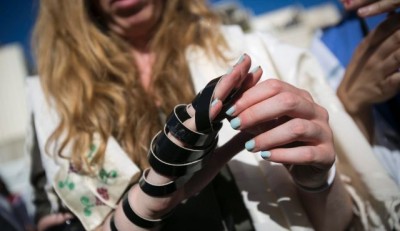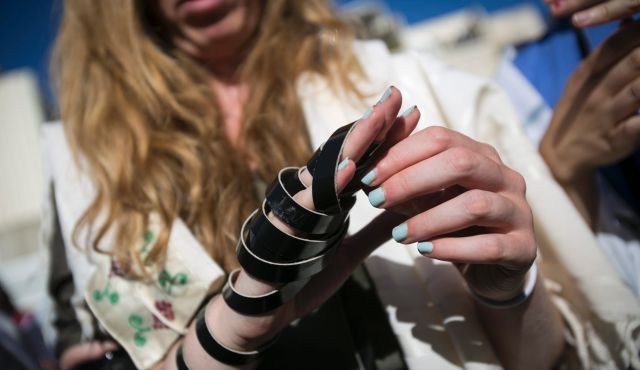
In January 2014, Rabbi Avi Weiss’s conversions were called into question by the Israeli Rabbinate. At the time, this was the most prominent example of the differences between the Orthodoxy’s left and right wings, as well as the growing gulf between American and Israeli Jewries.
This gulf widened last week when news broke of the Israeli Rabbinate’s decision to call Rabbi Shlomo Riskin’s tenure into question. Rabbi Riskin, the former head rabbi of the Modern Orthodox Lincoln Square Synagogue on New York’s Upper West Side and one of the founders of the settlement of Efrat, fought for many years to expand Jewish learning opportunities for women and helped train some of the first Orthodox female clergy.
And now, again, we see a justifiable outrage from the Modern Orthodox left.
The rift between the draconian, right-wing Rabbinate and the more democratic Modern Orthodox left is about much more than the conversion and Aliyah processes, although indeed, the fact that we place converts in the middle of this political rivalry is deplorable. It’s about the new Modern Orthodox leaders—and even, like Rabbi Riskin, some of the old guard—seeking validation from their more right-wing Orthodox peers.
Centrist and right-wing Orthodoxy are constantly moving closer together. This was put on public display last year when Yeshiva University openly grappled over whether or not to ordain a rabbinical student who hosted a partnership minyan in his home. As the organization that considers itself the flagship of Modern Orthodoxy, YU is at the center of the shift rightward. This shift was also seen when centrist Orthodox leaders castigated two Modern Orthodox day schools, Ramaz and SAR, for making public decisions allowing female students to lay tefillin during school services. Modern Orthodoxy has thus struggled to remain a valid option for its peers farther to the religious center and right. It’s time that Modern Orthodoxy breaks off.
Modern Orthodoxy is supposed consist of two key components: modernity and Orthodoxy. Yet it seems that Modern Orthodoxy is constantly striving for validation from individuals and organizations further to its religious right and. This actually puts the new Modern Orthodoxy—the one championed by today’s liberal Orthodox organizations—at a greater risk of moving to the right itself in an effort to appease the Rabbinate or other right-wing leaders. This need for validation from the right puts at risk so much of the progress it has made regarding the inclusion of women and queer people (to name a few previously disenfranchised groups) in Modern Orthodox synagogues. This is work that can, should, and must continue as Modern Orthodoxy becomes more inclusive and accepting, and strives to provide further opportunities for all. This stems in large part from the fact that Modern Orthodoxy still depends on many of the services that Orthodoxy has to offer.
We have already seen the right’s pushback against partnership minyanim and Yeshivat Maharat, an institution for ordaining female Orthodox clergy members, both of which have arguably become the hallmarks of Modern Orthodoxy’s progress when it comes to finding new and innovative ways to create spaces for women within Orthodoxy.
Let me be clear: I don’t care whether Modern Orthodoxy is “Orthodox enough.” In fact, I am arguing quite the opposite: Modern Orthodoxy should not need to find that validation within mainstream, or even centrist Orthodoxy. Modern Orthodoxy shouldn’t be considered Orthodoxy because the two categories are not compatible, nor should they ever be. Instead, it needs to look inward, and ask itself to what extent should it continue to seek validation from those who do not see Modern Orthodoxy as a legitimate expression of Orthodox values? To what extent should it continue to push on, to continue to find validation from, its own growing membership?
To do this, however, Modern Orthodoxy must fully shirk off its Orthodox brethren. Modern Orthodox parents need to stop sending their children to schools further to the religious right when there are options for more progressive Orthodox spaces — and Modern Orthodox day schools need to stop hiring Judaic studies faculty who are further to the right than the school is. It needs to be ready to say, once and for all, that is it not Orthodox. It is Modern Orthodox. Modern Orthodoxy needs to continue creating innovative institutions which combat—or embrace—many of the challenges that Modern Orthodox youth will face when they go off to college. It needs to contend seriously with Biblical criticism and continue striving to include women and queer people. It also needs to create institutions that limit Modern Orthodoxy’s dependency on the services that Orthodoxy offers by working to create comparable—and competing—services of its own. Modern Orthodoxy needs to stop depending on its more right-wing co-religionists for soferim to write its Torah scrolls and mezuzot; it needs to create comparable kashrut certifications. There is a time to play to the “most pious common denominator,” but that should not come at the expense of the legitimacy of what is becoming a distinct branch of American Jewry.
It, instead, must turn inward and ask itself not what the Orthodox response is to the questions posed by a (post-)modern society, but what, instead, the Modern Orthodox response should be. Modern Orthodoxy needs to create promising alternatives to the validation that many of its adherents might seek from the leaders to their religious right like the Israeli Rabbinate. (Interestingly, we might even say that this is tied intrinsically to creating a stronger, more vibrant Diaspora Jewish life that discourages reliance on Israeli Jewish standards of Jewishness.)
Otherwise, Modern Orthodoxy runs the risk of losing that which makes it promising in the first place.
Amram Altzman is a student at List College.

